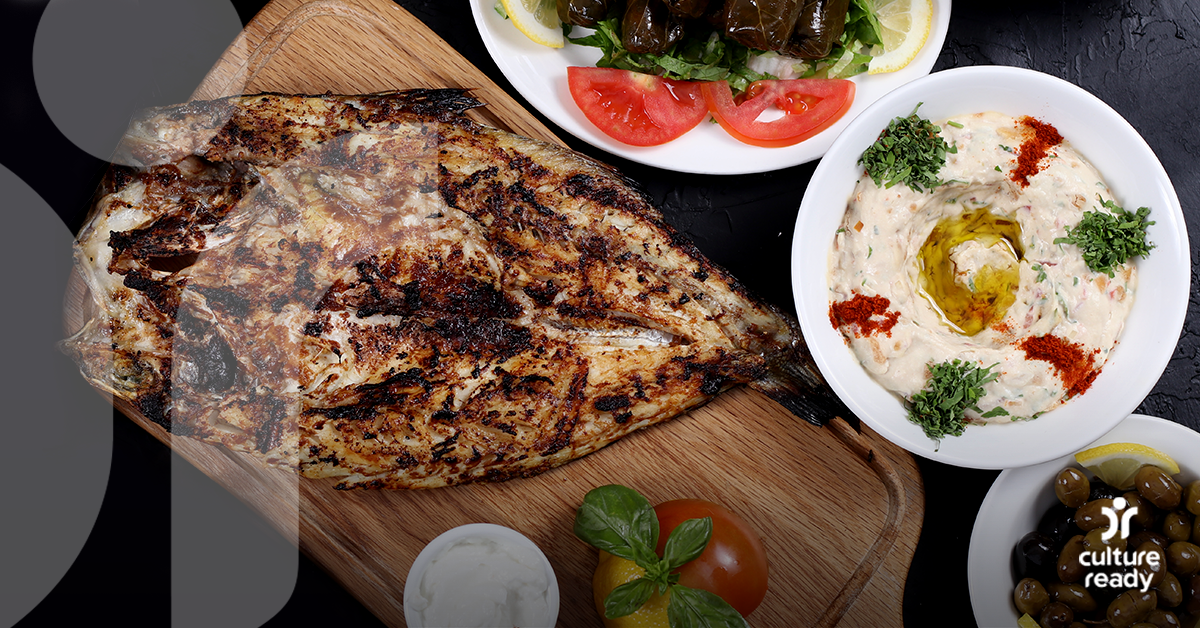Traditional Iraqi Dishes
Not only does Iraq have a rich cultural history, but also rich culinary traditions. International travel may be limited right now, however, your taste buds can still go on a tour of their own to experience Iraqi dishes.
During a traditional Iraqi meal, you should pass all food with your right hand; only touch food with your left hand if utensils are necessary. Make sure to show up hungry! It is a gesture of respect to eat two or three servings during a single meal.
Here are some examples of traditional Iraqi dishes. Some like magouf may be difficult to make at home, but others, like tepsi baytinijan, can easily be made in a standard kitchen.
Masgouf – Masgouf is a delicacy of grilled fish marinated in olive oil along with spices like sumac and turmeric. It is often thought of as the national meal of Iraq. Masgouf is notable for the way it is prepared—cooked standing up sideways next to a fire, allowing the smoke and flames to directly grill the fish.
Tashreeb – This meal was originally eaten by peasants, but overtime became a household favorite across classes in Iraq. Tashreeb means “to soak” in Arabic, and the dish consists of broth-soaked flatbread topped with spices, meat, and vegetables. Tashreeb is usually a shared, communal dish where those participating tear off pieces of flatbread and scoop up the filling.
Dolma – Dolma comes from the Turkish word dolmak, which means “to be filled.” In this dish, grape leaves are stuffed with mixed vegetables, such as zucchini, eggplant, and tomato then cooked together with garlic, onion, and pepper in an egg-lemon sauce. Dolma is not always a vegetarian food and often includes either ground lamb or beef.
Quzi – Lamb-based dishes are popular in Iraq, and quzi is no exception. Quzi is a slow-roasted lamb that is stuffed with rice, nuts, and sometimes even raisins. This dish can take a full day to prepare and is often enjoyed at festivals or large family gatherings.
Bagila Bil Dihin – This protein-rich breakfast incorporates both beans and eggs. The base is a pita or flatbread soaked in olive oil and then covered with fried eggs and boiled beans. However, unlike how you would enjoy eggs in the United States, this meal is usually eaten with your hands.
Kleicha – Kleicha is a traditional Iraqi holiday cookie made with rolled pastry and either a sweet date or walnut filling. These desserts are commonly served at weddings, birthdays, and Eid celebrations, which mark the end of Ramadan and the Hajj in the Islamic calendar.
Tepsi Baytinijan – This household dish is a comfort food like many casseroles enjoyed around the world. Tepsi baytinijan consists of lamb or beef meatballs layered with eggplant and a variety of other vegetables. These ingredients are then cooked in a tomato sauce until the eggplant begins to melt giving the dish a silky texture.
Learn More:
